RHS Ambassador and herb expert Jekka McVicar has the largest collection of culinary herbs in the UK; here are some of her more unusual choices and advice on how to grow them
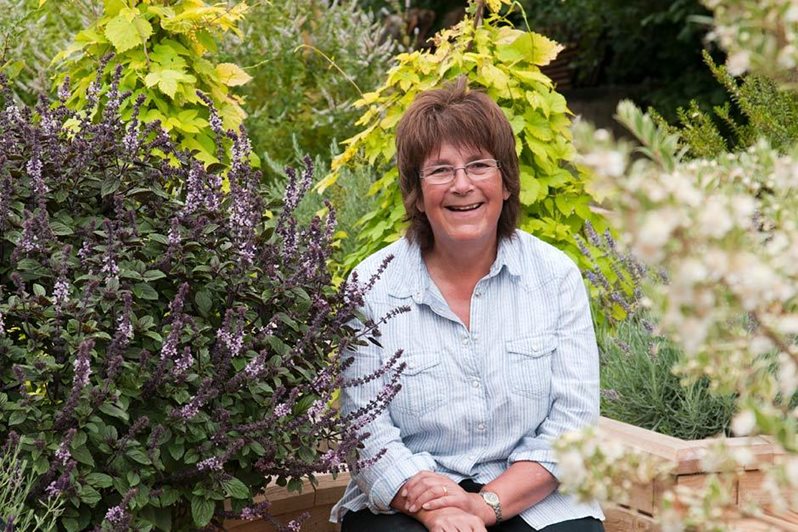
For 30 years Jekka McVicar has been designing, growing and making herb gardens. She has exhibited and won countless medals at RHS Shows and shared her passion for herbs with everyone from top chefs to enthusiastic gardeners.
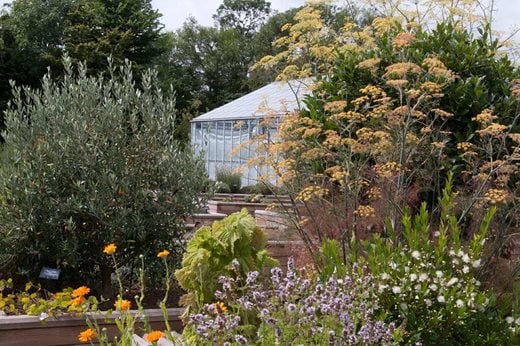 In 2012, Jekka and her team started creating the UK's first 'Herbetum' at their nursery near Bristol. The space was created to provide a resource where people can see, smell and touch Jekka's herb collection. Since completion in spring 2013, the Herbetum has flourished and ensures that the history, medicinal and culinary uses of herbs are not forgotten. It now has more than 300 different culinary herbs.
In 2012, Jekka and her team started creating the UK's first 'Herbetum' at their nursery near Bristol. The space was created to provide a resource where people can see, smell and touch Jekka's herb collection. Since completion in spring 2013, the Herbetum has flourished and ensures that the history, medicinal and culinary uses of herbs are not forgotten. It now has more than 300 different culinary herbs.
The collection contains not only the garden stalwarts that we all know and love, from heady-scented lavender to creeping thyme, but there are also many unfamiliar varieties that are still suitable for growing in our climate.
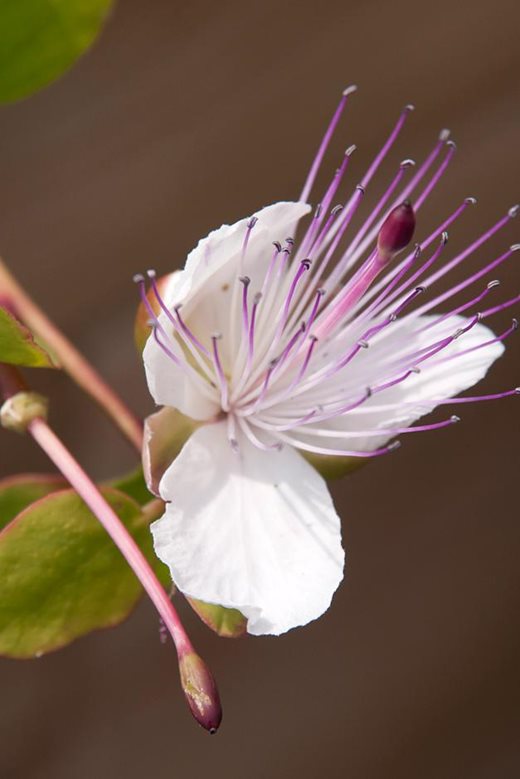
A taste of the Mediterranean
Capparis spinosa (common caper) is native to the Mediterranean, but is likely to have originated from the Middle East. It is a half-hardy evergreen perennial shrub, growing to 1m (3ft) tall, and spreading up to 1.5m (5ft).
From early summer to autumn masses of buds are produced – it is these that are pickled and can be bought for cooking. However, if the buds are left, they open to reveal dainty single white flowers with long purple stamens. It is worth leaving a few buds to bloom just to appreciate the beautiful flowers.
Garden cultivation
According to Jekka, a simple rule of thumb is that a caper bush can be grown where olive trees grow. With this in mind the preferred location is a very well-drained, hot, sunny position with little water. Since our UK climate rarely resembles that of the Mediterranean, the safest option is to grow the caper in a large container so that can be moved to a sheltered position in winter. It is highly salt-tolerant, so perfect for coastal gardens.
Capparis spinosa has incredibly sharp spikes, so gloves must be worn when handling the plant. However, spineless varieties are available.
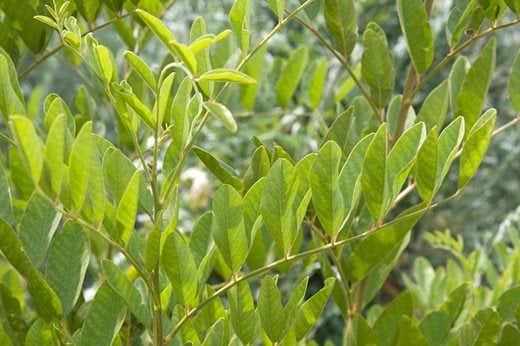
Sweet treats
Another Mediterranean native that is well-known, but less so in its natural form. Glycyrrhiza glabra (liquorice) is a hardy perennial growing to around 1.2m (4ft) tall and spreading to 1m (3ft). In late summer, purple and white pea-like flowers are borne on short spikes.
Garden cultivation
Liquorice requires rich, deep, well-cultivated soil. It does best in hot summers, but will need extra watering if the soil is very free draining.
As the herbs grow and mature they spill over the edges and soften the lines...
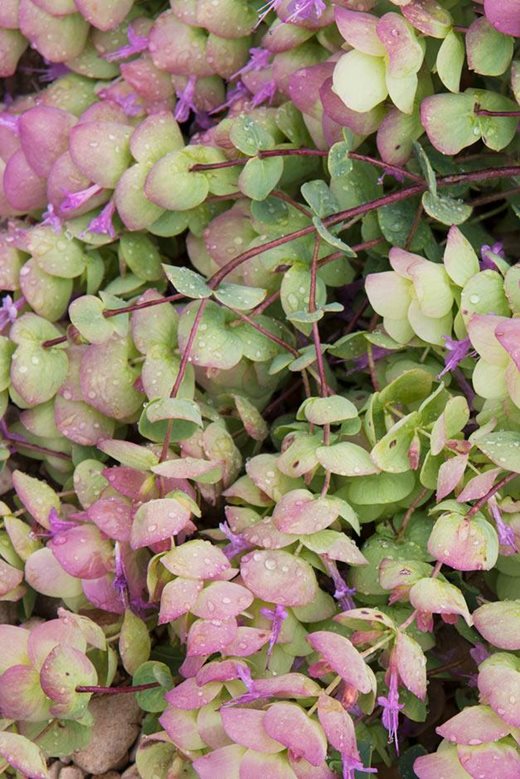 Unusual forms
Unusual forms
There are many different varieties of oregano (or marjoram), with some more valuable as garden plants than culinary herbs. One such plant is Origanum 'Kent Beauty'. A hardy perennial, 'Kent Beauty' forms a low trailing mound of foliage and flowers with a height of around 20cm (8in) and 30cm (12in) spread.
The flowers of this variety set it apart from many other forms of oregano. In summer, whorls of small, tubular pink flowers emerge from grey/green bracts that turn to dark pink as they age.
More information about origanums can be found in the September 2016 issue of The Garden, pp62-65.
Garden cultivation
'Kent Beauty' is an ideal decorative herb for growing in a container, especially as it prefers drier conditions. In the garden it will tolerate most soils, but does not like to be waterlogged over winter. The growing habit also makes it ideal for a rock or gravel garden.
Other oreganos with colourful bracts include:
Origanum rotundifolium
O. dictamnus
O. 'Bristol Cross'
O. 'Emma Stanley'
O. 'Barbara Tingley'
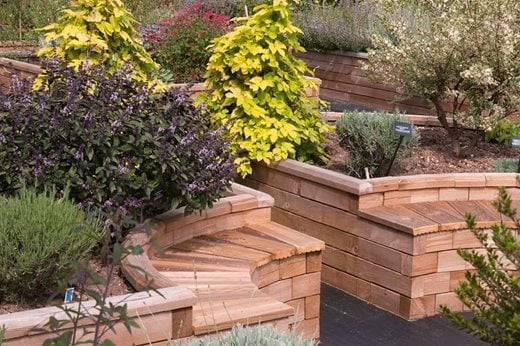 Taking a break
Taking a break
The wooden raised beds with inbuilt seating in the Herbetum are perfect for getting up close to different plants. As the herbs grow and mature they spill over the edges and soften the lines of the wood.
The bright leaves of Humulus lupulus 'Aureus' (golden hop) stand out against the surrounding planting. A hardy herbaceous climber to 6m (20ft) tall, liking a sunny spot in rich soil. There are seperate male and female plants with the females producing the iconic hops.
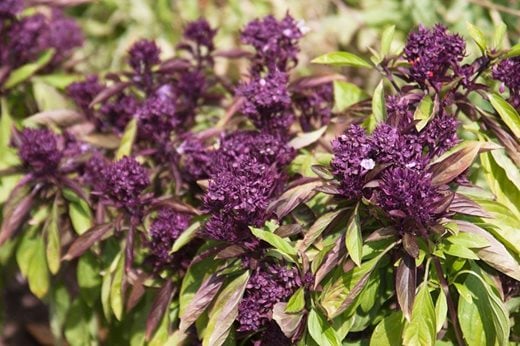 The secret ingredient
The secret ingredient
Ocimum basilicum 'Horapha' (anise basil) has an aniseed flavour and is often used in Thai and Indian cooking. It is an annual reaching around 45cm (18in) with purple-tinted leaves.
Garden cultivation
Grow from seed and plant outside after frosts have finished, or in a container on a light kitchen windowsill or patio. Prefers well-drained, rich soil in a sunny, sheltered position. Avoid overwatering containers.

